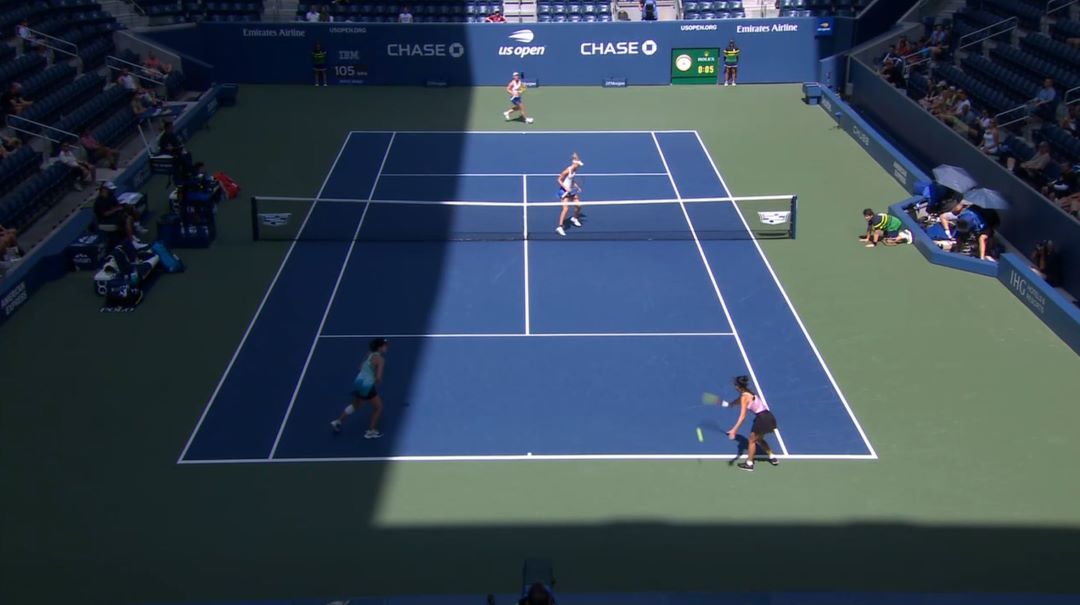The USTA League Regulations introduces the different types of NTRP Ratings with a simple sentence: “Each NTRP Level is followed by a letter indicating the type of rating.” That statement is within a table with a much more ominous title: “NTRP DYNAMIC DISQUALIFICATION.” Different rules and regulations apply to the various rating types.
Yesterday I introduced the tournament-exclusive T rating and started building a case for why it may not be needed. The impetus for considering that idea at all is rooted in how T-rated players are impacted by the dynamic disqualification rules.
The first mention of the T rating in the “NTRP Dynamic Disqualification” table is under the subheading “Who cannot be NTRP dynamically disqualified?” Three rating types are listed that are ostensibly exempt, “C Computer Rated Players *, M Mixed Exclusive Players, ** and T Tournament Players. **”
The asterisks are courtesy of the USTA and are used instead of footnotes that list the conditions under which these players, who are supposed to be exempt from dynamic disqualification, might nevertheless be disqualified. It is fairly convoluted that every rating type has exceptions. From my engineering perspective, that is usually an indicator of inelegant design, but I digress.
The note attached to the double asterisk next to the T rating reads as follows: “** Year-end (M) and (T) rated players are required to self-rate to enter the Adult Division, automatically become (S) rated players and therefore become subject to NTRP dynamic disqualification.” The words “Adult Division” is a curious choice. “USTA League” would have provided more clarity.
The fact that T-rated players are required to self-rate to participate in USTA League play is a strong indication that the USTA League National committee does not recognize the validity of that rating. As long as a T rated player only plays tournaments, they cannot be dynamically disqualified. However, the moment a T rated player decide to join a USTA League team, they are forced to self-rate and immediately become eligible for dynamic disqualification.
To illustrate why I think that is a problem, I will use a real example that culminated over the past month. I am living part-time in my childhood hometown, caring for my Mom. Somehow that former tennis hotbed had devolved into a tennis ghost town. When the Trophy Husband and I arrived back on the scene, the city did not have enough NTRP-rated players to conduct local USTA League play at any level. In fact, it was a struggle even to muster enough people to form teams for USTA League qualification events.
The players from low population areas who want to engage with the USTA tennis ecosystem face a number of challenges that players in the larger metropolitan areas don’t have to deal with. While many of those are issues are geographically unavoidable, other hurdles exist for the small markets soley due to USTA Regulations.
Ben is a new adult player in Wichita Falls that caught the tennis bug when his kids took up the sport. Without the option of local League play, he traveled to tournaments and played enough matches to earn an NTRP 3.0 T rating. Consequently, he was not at risk of dynamic disqualification as long as he only played in tournaments.
However, earlier this year, Wichita Falls managed to scrape enough players together to send a single team to the 40+ Men’s 3.5 Sectional qualification tournament. As a quick primer, qualification tournaments in Texas are used as a pathway to Sectionals for teams that don’t have enough participation in their area to meet the minimum requirements for conducting a local league.
To make the numbers work, a few 3.0 rated players were required to “play up.” Ben was required to “self-rate” so he would be eligible. Unfortunately, no other teams entered the qualification event. The team ultimately qualified for Sectionals via direct play against a second hastily assembled team. That also required a special exemption from USTA Texas since the Regulations require at least three teams in local League play in order to send a team to Sectionals.
As an interesting aside, it is not clear if Ben would have been allowed to rescind his self-rating had Wichita Falls failed to assemble a second team. When Ben self-rated to register for the team that first tried for the qualification tournament, he took a risk. If the second team had not been conjured up, there is a chance that he would not have played any USTA League matches at all. However, he would theoretically now be exposed to dynamic disqualification for tournament matches at 3.0. That is despite the fact that he went into the year with a 3.0 T rating that would have prevented that from happening.
Ben competed in four matches for Wichita Falls at Sectionals. On paper, he played very well, as every one of those matches was decided by a super-breaker. In fact, he went 3-1 at the event. While technically, he avoided disqualification since he was playing up, it seemed certain that Ben would be promoted following the event. Indeed he received that email notification shortly after it was completed.
I don’t think anyone would argue that Ben is not currently performing at the 3.5 level. In fact, he was disappointed that his T rating at the end of last year came out at as 3.0. It was his intent to play tournaments this summer to take a shot at the NTRP National Championship at 3.0. His promotion means that he can no longer pursue that.
The USTA “About NTRP National Championships” informational page asserts that self-rated players are not eligible for the tournament. In fact, the language on this page is a little sloppy as it states, “SELF-RATED PLAYERS ARE NOT ELIGIBLE. A player must have a computer rating.” Surely a T rating is considered a computer rating in this context. There is an opportunity for the USTA to clean up the verbiage for greater clarity on that page.
Anecdotally, it is believed that there is a waiver process that would allow a T-rated player who was required to self-rate for USTA League to still compete at the NTRP National Championships. However that isn’t clearly stated on any public facing USTA webpage that I can find. That is something else that should probably also be explicitly stated within the eligibility criteria.
Ben’s specific situation gets even fuzzier when considering his potential eligibility for the NTRP National Championships, even at 3.5. Despite the fact that the NTRP algorithm projected a high enough confidence level to “promote” Ben to 3.5, his rating is still marked by an S, meaning that he is still a self-rated player even though he did not rate himself at that level.
That mean’s that Ben’s self-rating designation is no longer a result of the fact that self-rating was required for him to play on a USTA League team. Instead it is because the computer “promoted” him to that level. It seems patently absurd that the USTA’s NTRP algorithm can decide it has enough confidence to force a player into a higher level, yet still not award a C rating at that point.
Ben’s eligibility for Tri-Level at 3.5 later this year is also in question. According to the USTA Texas Informational Page, “No Self-Rates Allowed or A, T or M rates allowed for all levels.” Again it is assumed that Ben’s 3.0 T rating would support an exemption to compete as a 3.5 S, but that is not explicitly stated anywhere.
However, the most potentially profound impact is that as a self-rated player, Ben could potentially be dynamically disqualified through tournament play at NTRP 3.5 later this year. It could also happen if he finds a way to engage in additional league matches this fall. In fact, since we know that disqualification strikes “carry over,” it is quite likely that he is already partially down that path.
Recall that Ben started the year with an NTRP 3.0 T rating and thus was not at risk of disqualification based on tournament play at that level. It is bizarre to realize that over the course of the past few weeks he could now potentially be disqualified from tournament play at the NTRP 3.5 level. That is patently absurd.
Once again, I don’t think anyone would assert that Ben’s current NTRP 3.5 rating is inappropriate. In fact, he expected to start this year as a 3.5 T rather than as a 3.0 T as assigned by the USTA’s NTRP algorithm. However, if his subsequent play this year induces additional disqualification strikes that pushes him up to 4.0, it will be a travesty.
If that transpires, that brings us back to essentially the same scenario described in the series of posts earlier this year that culminated with “Tennis (Apparently) Doesn’t Need Rafa.” Dynamic disqualification disproportionately impacts players from smaller playing populations. It creates hurdles that make it more challenging to build participation.
In the past, I have argued that it might be time to consider ending dynamic disqualification. If that is a bridge too far, an alternate way to help players in less populated areas would be to treat tournament matches the same way as USTA League matches which would end any need for the T rating.
Elimination of the T rating would have prevented the scenarios outlined in this post from unfolding at all. It is something that could seriously help the tennis ecosystem.
- 2023 USTA League National Regulations, USTA Resource Document, May 31, 2023.
- “ABOUT NTRP NATIONAL CHAMPIONSHIPS,” USTA Informational Page, viewed June 16, 2023.
- USTA TEXAS TRI-LEVEL LEAGUE, USTA Texas Informational Page, viewed June 16, 2023.



